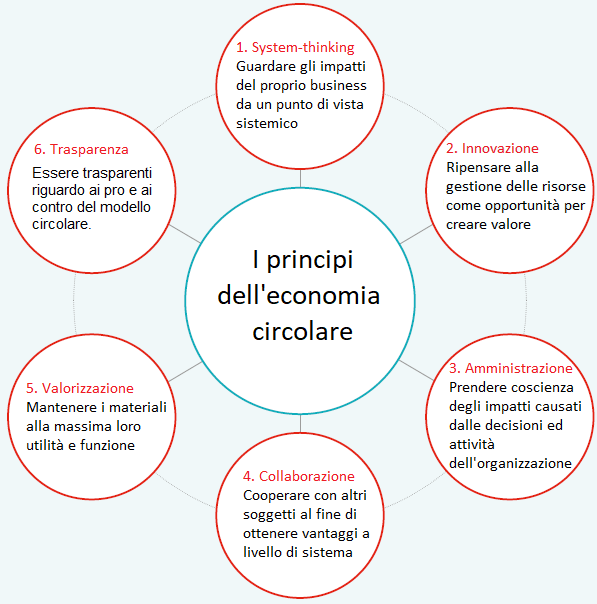The linear economy model foresees an unlimited use of resources and without considering the impact of human activities involves:
- acceleration of phenomena such as the loss of biodiversity and entire ecosystems;
- pollution;
- increase in natural resources not supported by increased biocapacity;
- greater volatility and higher prices for raw materials and natural resources.
In the circular economy model, companies, to cope with the risks outlined above, change the current business to make their activities less and less dependent on natural resources and raw materials. The production processes and the materials used must be assimilated to the natural elements and therefore be able to regenerate.
The current production reality is still far from the "closure of the cycle", or rather from the ability to regenerate, recover and recycle everything that would be discarded. Using cascading resources means using the waste of a product as a new input to create productivity and income.
Value creation can be achieved by using the material in successive cycles belonging to completely different industrial sectors.Through the construction of a network of interoperable organizations it is possible to ensure that the gap of one can become the input of the other with an optimization of the flows, whether they are matter or energy.
In order to put the principles of the circular economy into practice in the organizations, the British Standard published in May 2017 the first official standard, recognized internationally, for the circular economy called BS 8001.

 English (UK)
English (UK)  Italiano (Italia)
Italiano (Italia)  Deutsch (Deutschland)
Deutsch (Deutschland)  Français (France)
Français (France) 




